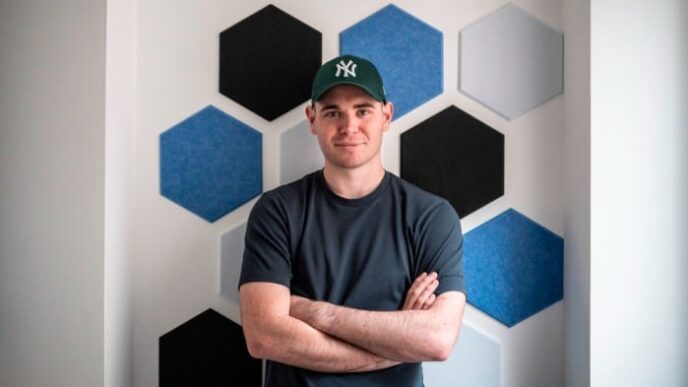In the venture world, small doesn’t always mean limited. For AAF Management, a boutique investment firm quietly operating out of Washington, its small size has become a superpower. Backed by Abu Dhabi’s Mubadala Investment Company, the firm has carved out a distinct position in the global venture capital landscape by blending focus, patience, and access.
When Omar Darwazah and Kyle Hendrick launched AAF Management nearly a decade ago, they resisted the temptation to chase massive assets under management. Instead, they concentrated on alignment and precision, starting with a modest $25 million fund in 2017. That strategy has paid off. The firm’s latest vehicle, the $55 million Axis Fund, brings total assets under management to around $250 million across four funds, a fraction of what most VCs manage, but more than enough to stay nimble and selective.
For AAF’s partners, keeping the fund small wasn’t just a preference, it was a philosophy. As Darwazah explained, managing a $50 million fund is very different from handling a $500 million one. Once funds grow too large, he said, they often lose GP-LP alignment as management fees begin to outweigh carried interest. AAF chose a different route: fewer dollars, stronger discipline, and sharper focus on performance.
That focus also shows in how AAF structures its investments. Unlike most venture firms that deploy all their capital directly into startups, AAF operates a hybrid model, part direct investor, part fund-of-funds. Roughly 80% of each fund goes directly into startups, while about 20% is allocated to emerging fund managers. The result is a pipeline that continuously feeds AAF with early access to some of the hottest new companies long before they become visible to the broader market.
This approach has helped AAF build one of the richest datasets of early-stage private companies in the industry. Hendrick, who leads many of the firm’s fund-of-funds relationships, noted that the best insights into startup formation often come through limited partner checks in small, emerging funds. Those early LP positions give AAF a window into hundreds of high-potential founders who might otherwise fly under the radar.
Through this dual investment strategy, AAF has landed direct stakes in breakout companies such as Current, Drata, Flutterwave, Jasper, and Hello Heart. Meanwhile, its indirect exposure via fund investments connects it to unicorns including Mercury, Deel, Retool, and more recently AI innovators like Motion, Decagon, and Eleven Labs. Many of these came through AAF’s relationships with seed-stage managers such as Leonis Capital, Wayfinder Ventures, and Quiet Capital, giving the firm early visibility into over 800 venture-backed startups launched between 2021 and 2025.
AAF’s model also emphasizes relationships over control. The firm doesn’t try to micromanage product roadmaps or recruitment for its portfolio. Instead, it focuses on something founders often value more, access. As Hendrick put it, AAF’s biggest contribution in a startup’s early phase is its venture network. The firm’s LP positions across 45 active funds mean it can quickly plug founders into later-stage investors when it’s time to raise larger rounds. That kind of instant distribution is rare in early-stage venture capital and makes AAF an attractive partner for both startups and emerging managers.
The firm’s network also appeals to institutional investors who prefer diversified venture exposure without the complexity of managing dozens of fund relationships. AAF acts as a bridge between U.S. startups and global capital pools, particularly in the Middle East. Its backers include Mubadala, several U.S. and European family offices, a publicly traded company, and general partners from leading American asset managers. That mix of institutional and strategic LPs underscores how AAF has become a trusted access point for Gulf investors eager to participate in U.S. innovation without overextending operationally.
Both founders bring complementary strengths to that mission. Darwazah, with a background in corporate finance and private equity across the Middle East, has long specialized in connecting Gulf capital to high-growth Western startups. Hendrick, a former entrepreneur who worked at the UAE Embassy in Washington and at a family office in Abu Dhabi, adds an operator’s lens and a global investor’s perspective. Together, they’ve positioned AAF as a connector, between capital and creation, between early-stage founders and the next wave of fund managers.
Since launching, AAF has built an impressive track record. Across four funds, the firm has made 138 direct startup investments and backed 39 emerging fund managers. Its portfolio has already produced 20 exits, collectively generating nearly $2 billion in value. Some of those exits include names like TruOptik, MoneyLion, Even Financial, Portfolium, Prodigy, BetterView, Lightyear, Trim, HeyDoctor, and Medumo. Several were acquired by publicly traded companies such as TransUnion, GoodRx, and Affirm, validating AAF’s early-stage thesis.
Industry benchmarks back up that performance. According to data from Cambridge Associates and Carta, some of AAF’s prior fund vintages rank in the top decile for net TVPI among comparable funds. That level of consistent outperformance has turned the firm into one of the most quietly successful micro-VCs in the U.S., even without the mega-fund branding of larger players.
Darwazah believes AAF’s structure gives it an edge in identifying “signal from noise.” By being both an LP and a direct investor, the firm has visibility into which startups are attracting strong follow-on interest and which founders are consistently executing. That allows AAF to double down on potential outliers early, the kind of fund returners and seed-to-unicorn stories that define generational venture success.
For many observers, AAF represents a model of what the next generation of venture capital could look like: smaller, more networked, and less dependent on traditional fundraising cycles. Rather than chase scale for its own sake, AAF has focused on access and alignment. It invests in the people building the future, whether those people are founders or the managers backing them. And by doing so, it’s created a compounding advantage that most larger firms can’t easily replicate.
At a time when many VCs are struggling to raise new funds or justify their fees, AAF is quietly winning deals in some of the most competitive startups in the world. Its Mubadala-backed model has proven that a lean, hybrid approach can produce outsized results, as long as the partners stay close to the signal and resist the noise.
As AAF enters its next chapter with the Axis Fund, its bet is clear: early-stage investing works best when it’s focused, collaborative, and global from day one. The firm may be small in size, but its influence, stretching from Washington to Abu Dhabi to Silicon Valley, continues to grow far beyond its capital base. In an era where venture capital often prizes scale over strategy, AAF Management is proving that sometimes, less really is more.













